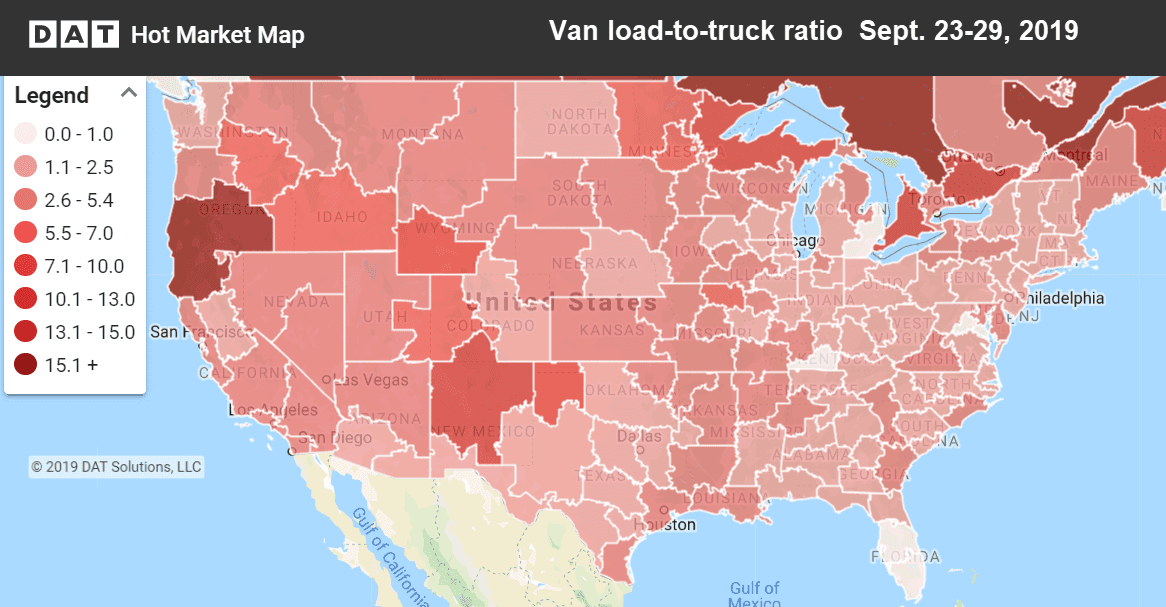We usually see a boost in freight volumes in the last week of the quarter, and last week was no different. Van freight volumes were up more than 7%, providing positive momentum going into the fourth quarter.
Houston had a big comeback, with volumes up more than 20%, after enduring severe flooding following Tropical Storm Imelda the previous week.
Rates, on the other hand, didn’t reflect the increase in volumes. The national average rate increased 1¢, but that was mainly due to an increase in the fuel surcharge. Diesel prices have moved up following the attack on Saudi oil fields two weeks ago. Linehaul rates (excluding fuel) were down in 61 of the top 100 lanes last week.

Hot Market Maps show the number of available trucks vs. available loads and are available in the DAT Power load board and DAT RateView.
Rising markets and lanes
In addition to Houston, a few other markets with had strong volume increases. There was more freight coming out of Charlotte, which is shaking off the impacts of Hurricane Dorian, as well as Stockton, CA,where they’re harvesting tree nuts and fall produce. West Coast markets led the way with rate increases last week.
- Portland, OR to Stockton, CA increased 9¢ to $1.51/mi
- Seattle to Los Angeles gained 8¢ to $1.31
- Further east, Chicago to Buffalo added 7¢ to $2.62
- Atlanta to Philadelphia moved up 6¢ to $2.05
Falling markets and lanes
The Northeast had been seeing slightly positive rates in recent weeks, but an influx of inbound freight caused rates out of Philadelphia to slip, moving back to pre-Hurricane Dorian levels. Prices from Denver also moved lower.
- Charlotte to Buffalo dropped 20¢ to $2.08/mi.
- Philadelphia to Charlotte fell 12¢ to $2.08/mi.
- Philadelphia to Buffalo was down 11¢ to $2.08/mi.
- Denver to Albuquerque, NM slipped 10¢ to $1.87


